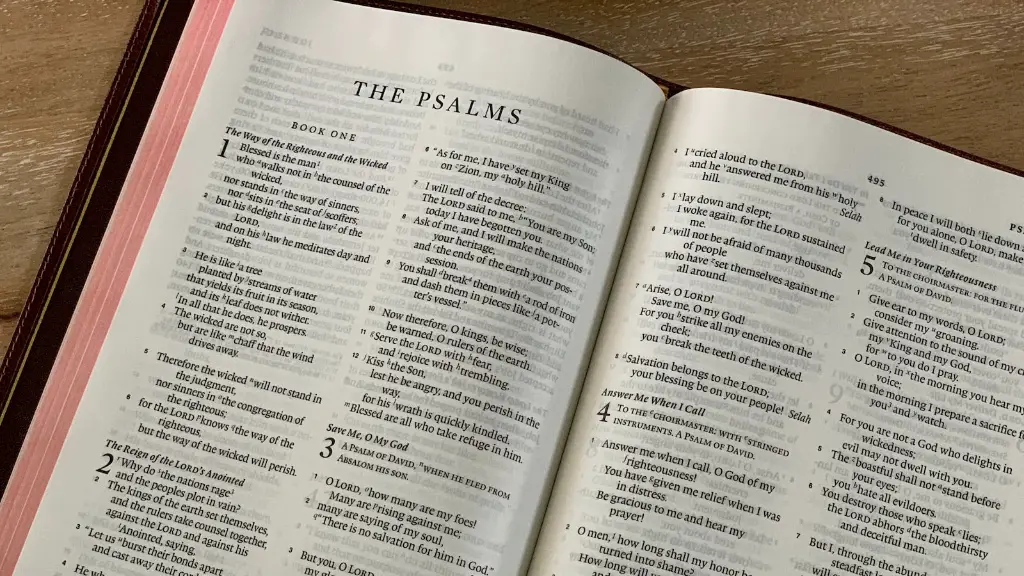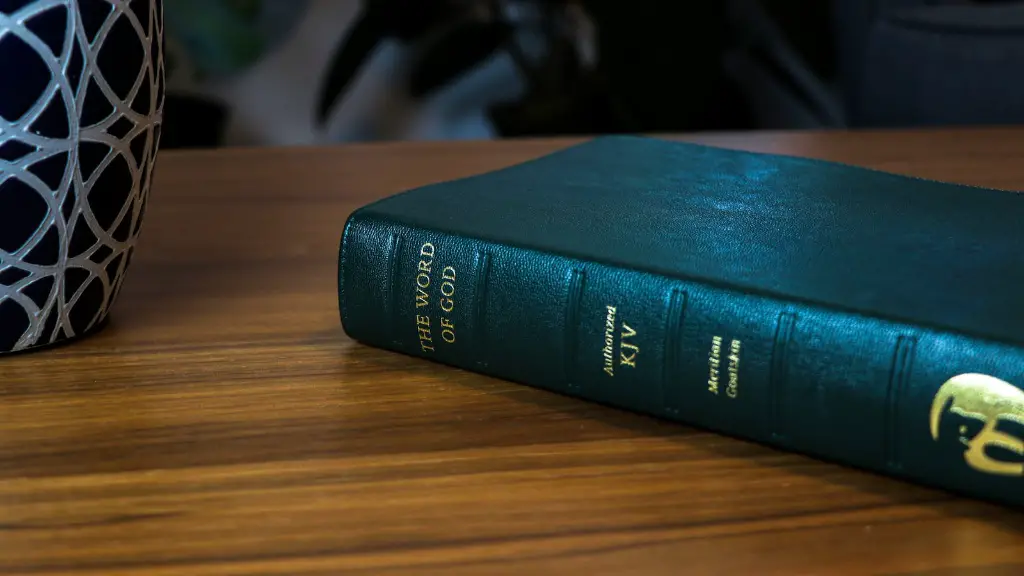When it comes to religious literature, the Bible is one of the oldest known texts in existence. Written by a varied range of authors, the Bible has historically acted as a moral compass for many individuals across the world. But what is one of the most mysterious censored elements of the Bible? It is the forgotten goddess, Asherah.
Asherah was once a prominent goddess in not just in Bronze Age Middle East, but in ancient Israel as well. She was worshipped by kings and queens, and revered as the consort of El, the god of Israel. In some Semitic religions, she was even known as the “Mother of the Gods.”
Many historians and archeologists believe that Asherah was the most powerful goddess worshipped. But in the late first millennium B.C., her references mysteriously disappeared in the Bible. So why did Judaism and Christianity erase her from the written history?
To answer this question, it is important to examine the changes that faith and religion have gone through over the centuries. It is believed that many Middle Eastern cultures at the time worshipped polytheistic gods, while Judaism and Christianity shifted towards a monotheistic faith. In this shift, beliefs and figures that threatened the idea of a single god were removed from the scripture.
Furthermore, during the reign of the Babylonian Empire, the followers of Yahweh were exiled in the city. As a result, this is when the Torah and other writings associated with the Jewish faith surfaced. During this period, references to Asherah were omitted, changed, or were edited in order to conform with the new interpretation of the faith.
In addition, many historians argue that the figures of prominent male gods overshadowed the goddesses who once ruled over the Middle East. The male figure of El, in a sense, was probably seen as replacing Asherah in the faith. Thus, her worship and reverence faded away.
Conflicting Beliefs in Judaism and Surrounding Cultures
Beliefs in monotheistic gods, while deeply rooted in Judaism, was derived from surrounding cultures and other neighbouring religions. Since the power of male gods held sway, the existence of female gods, such as Asherah, was simply not accepted and thus edited out.
As for the references that still exist, different cultures and influences continue to create conflicting theories around Asherah’s worship. As an example, in the Hebrew Bible, Asherah was referenced as ‘the Asherah’ or ‘the Asheroth’. This is typically interpreted as a reference to the wooden Canaanite poles and statues of Asherah, while others state that it could have simply been the goddess’ title.
Jews and Christians still think of monotheism as the only accepted form of religion, further erasing the memory of Asherah from faith. Historians also argue that some of the writings included in the Bible were meant to catered to a patriarchy at the expense of multiple deities.
Uncovering Forgotten Myths
Fortunately, more and more historians and researchers are uncovering the lost myths and views on the goddesses in modern times. In addition, with the new technological advancements and archaeology, researchers are uncovering further evidence about the goddesses and their worship, allowing for a more complete understanding of the female gods in the area.
Most recently, in Patrick D. Miller Jr’s book, “Asherah, Goddesses in Ugarit, Israel and the Old Testament”, mythological evidence was used to understand and construct the various characteristics of the goddess. This proves that Asherah is still relevant in today’s religious discussions, and that she is slowly being re-discovered.
In order to fully understand the vast history of religion, it is necessary to have an open dialogues about the forgotten gods and goddesses. Such conversations not only acknowledge the past, but they can also teach us how we can embody faith in the modern context.
Archeological Evidence
The archeological evidence of Asherah is broad as it spans from Syria to Israel. Unearthed clay artifacts with Asherah in them date back to 13th Century BC. In ancient Israel, some figurines and sculptures of Asherah were depicted in the prevalent style in their area with their wings spread in the air.
Archaeologists have also found altars in multiple ancient temples dedicated to Asherah. This suggests that she must have been an integral part of ancient religion in the Middle East. Some of these temples were located in the same place as that of other gods, such as El, implying that either the faith was maintained in a side-by-side manner or that Asherah had a special relationship with El.
In addition to sculptures and other visual objects, Asherah was also connected to various trees that were growing in the urban and rural areas. This demonstrates that beyond practices in temples and by royalty, Asherah also had a significant presence among the citizens of ancient Israel.
Evidence In The Bible
Exploring ancient writings is another way to identify further evidence about Asherah. Although she was edited out by later authors, scholars have managed to uncover references to her throughout the Bible. Through examining certain words and phrases, the original meanings of these languages and how they were used can be understood – bringing back to life the forgotten goddess.
In passages such as Exodus 34 for example, references to Asherah are mentioned multiple times. This biblical verse speaks about ‘breaking down pagan altars and cutting down sacred poles”. Additionally, in other verses (Deuteronomy 4:19; and 2 Kings 21:7) the word ‘icons’ is written, which is believed to be the replacement word for Asherah.
Thus, this evidence shows that while references and celebrations of Asherah eventually faded in Israel and other Middle Eastern cultures, evidence of her worship can still be found throughout the Bible.
Modern Times
Although Asherah is still not commonly mentioned in ancient times, some modern denominations have started to recognize and incorporate her into the religious practices. This has in turn led to the re-establishment of sacred temples and consecrated icons of her. This is a fundamental shift from her past, where her worship and reverence was censored due to varying belief systems.
In addition, the popularity of the Wiccan movement has also allowed for a greater connection to Asherah. Oftentimes, this is in the form of nature worship and reconnecting to sources of power such as female gods.
In conclusion, understanding the prominent goddess figures in the Bible requires a deep investigation into faiths, religion, and cultures throughout time. There is still evidence of Asherah’s presence throughout the Bible, offering a unique insight into different belief systems and religions of ancient times.
Gender Equality
By discussing Asherah, scholars are uncovering conversations about gender equality in the ancient Middle East. This extends beyond simply understanding the faith of the region, but rather offering clues about the power dynamics during that historical period.
Through further research, more information is being unearthed about the role of female gods in religion. This further highlights the long-existing gap between gender constructions and expectations. As a result, this can potentially inspire a shift in power dynamics, as well as an understanding of gender roles in the region.
In fact, the newest academic publications are responding to this call for understanding gender inequality in the Middle East. Various writers, authors, and researchers are providing an insight into the development of gender related issues in the region.
This further suggests a long-term discussion of religion, which includes Asherah, to be had in the future. Referencing the goddess and her worship in the scripture should no longer be absurd, but rather open a can of worms for further inquiry.
Reformation of Worship
The re-emergence of female gods in the region and the interests surrounding them is a sign of cultural progression and theological reformation. In contrast to the first millennium, Asherah’s name is no longer a taboo, but rather an element that is being discussed.
In the last few years, interest in female power is on the rise. Both individuals and institutions are looking towards goddesses to fill in the blanks that traditional teachings have left. As such, this is beginning to cast a new light on the importance of a female presence in religion and representation in various cults.
Ultimately, knowledge of the forgotten and censored goddesses can help us gain a more complete understanding of the region’s religion. This includes their various practices and multi-faceted beliefs.
Commemorating Asherah
In light of the recent renewed interest in female gods, different institutions are looking for ways to reclaim the recognition for Asherah. This includes consecrating monuments, artifacts and temples dedicated to the goddess.
Various societies have taken a keen interest in the cult of Asherah and are looking into new and creative ways to celebrate her. By actively looking for ways to respect what was once heavily censored can further open doors for multi-faceted understandings of religion.
In order to fully grasp the importance of Asherah in the ancient context, historians and archeologists need to lay out the groundwork. This will pave the way for the recognition of a female presence in the mentioned contexts, thus creating a more unified representation of faith.





